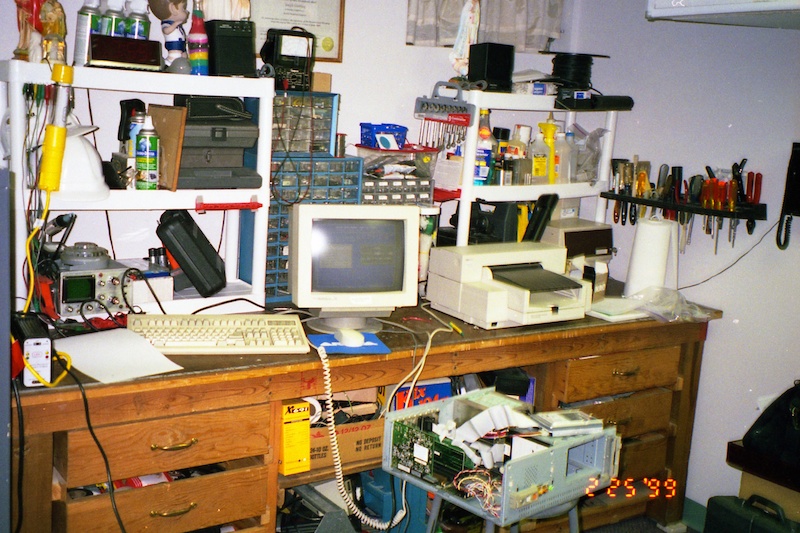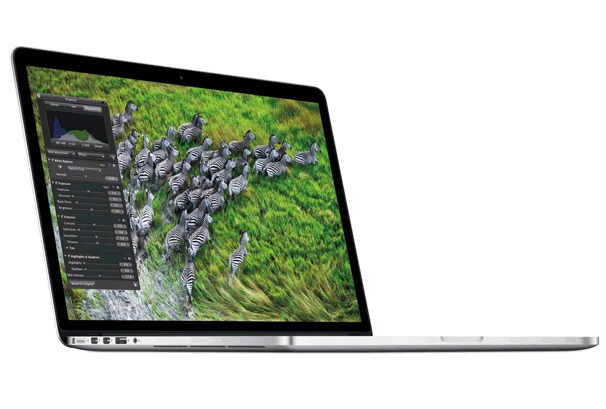In a break from the typical kind of writing I do here, I'd like to mention a few thoughts I've had after reading some opinion pieces on the reparability (or lack thereof) of the new MacBook Pro with Retina display.
Early PCs and Macs
The first computer I owned was a scrap-parts 386 DOS-based PC. I found a working 386 processor from a broken computer, scrounged 1MB of RAM from a couple dead motherboards, found a small hard drive and floppy drive, and slapped it all together inside a huge metal case. It ran great, except when one of the components failed—which seemed to happen on a monthly basis.

My first PC - and all the tools necessary for PC repair!
While using early PCs, I had to deal with IRQ addresses, serial port driver conflicts, floppy drive cables malfunctioning, hard drive errors, and power supply fuses breaking... not to mention the myriad software incompatibilities with various bits of hardware (and I couldn't just Google "<device name> + <windows 3.1>"!).
I even spent quite a bit of time hardware hacking with the first few Macs I owned (a Mac IIci, a PowerBook 180c, and then a few other Mac desktops and towers—more history here).
Throughout high school and college, I helped a few hundred people repair or upgrade their computers, first through 'Jeff's Computer Service' (as a side/hobby job), and then through Midwestern Mac, LLC (this site's company). I loved working on computers, and still do! From the earliest computers until the past five or so years, most computers required some level of technical knowledge to be used effectively, and required repairs and upgrades at least once or twice a year.
But times have changed; I've since dropped 'computer repair' from the services I provide, because the only service requests are for Windows users who have found some way to clutter up their computer with strange search toolbars and other junkware.
PCs of Today
Many (if not most) PCs are still built with similar case and component sizes as computers in the 80s and 90s. RAM chips, hard drives, optical drives, power supplies, and sometimes even processors can be swapped out.
But I can count on one hand the number of people that I remember in the past three years asking me for help upgrading a component or fixing a hardware problem on their computers—and every time it was a simple hard drive data corruption. Even cheap PCs that use the most flaky components are many times more reliable than the best computers were ten years ago.
Apple's Foresight
Apple is the first company to realize computers don't need to be repaired nearly as often as they once were, and that people hardly, if ever, upgrade anything in their computers—and they're reaping insane profits because of it.
Let's look at their desktop computer line:
- iMac: Hardly reparable besides RAM upgrades—requires suction cups, a huge working surface, tons of screws, and a at least three or four tools. But uses mostly standard components (RAM, hard drive, etc.).
- Mac Mini: Same as iMac, but even harder to get to some of the parts without plenty of mini-screwdrivers and good eyesight.
- Mac Pro: Insanely large, easy to repair, but it's a machine meant only for pros—the only people who are willing to spend the money on upgrades more complex than a stick of RAM.
Many have noted that Apple has not yet released a new/redesigned Mac Pro. I wouldn't be surprised if Apple radically redesigns the Mac Pro to be a much smaller workstation (it's gigantic!), but keeps some RAM slots and a PCI slot or two available. With Thunderbolt and a decline in optical drive usage, I know many pro users who want something more than an iMac, and would buy a Mac Pro without energy and space-consuming extra drives, fans, and empty slots.
Some think that the MacBook Pro should be similar to the Mac Pro in that it should be easy to swap out most any component inside for something faster; but I don't think Apple will ever go back to the MacBook Pro-style laptop for two reasons:
- Nobody wants a chunky, 'fat' laptop, especially after they've seen and/or used an Air or the new Retina MBP. It's a simple matter of portability and sleekness trumping upgradability. And upgradability is just not that important to at least 90% of consumers.
- Apple both makes and saves more money. Apple gets an extra little bit of money up front from the many people who upgrade build-to-order options, and they also get the entire (but diminishing) market for repairs and battery replacements. More importantly, though, Apple uses fewer quantities of raw materials (think aluminum, screws, plastic for slots, etc.) per laptop, fewer man-hours assembling everything, and doesn't have to contract with as many suppliers. As a bonus, there's even more room for a battery to power the amazing processor and screen!
I'm fine with this, because I'm able to do new things with my computers that wasn't possible even five years ago, but more importantly, I can do them in more places than I ever could before because it's so small (I used to use my laptop as a desktop; now it sees as much time with me away from the desk as it does on my desk). And I haven't even mentioned my iPad, which is itself a revolution!

All computers are amazing* nowadays (at least in terms of performance, reliability and common features), but some people are stuck in an older frame of mind that places component replacement and servicability above making a computer the best it can possibly be.
*Of course, hardcore gamers, professional photographers, large-scale developers, and rendering people can never get enough power... but they can always buy the next computer and sell me their old one :)